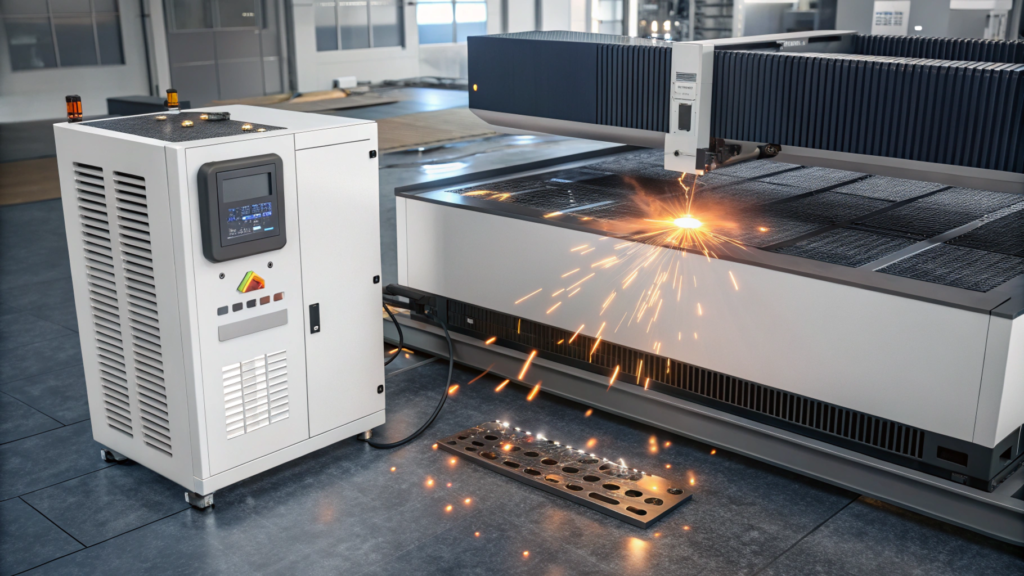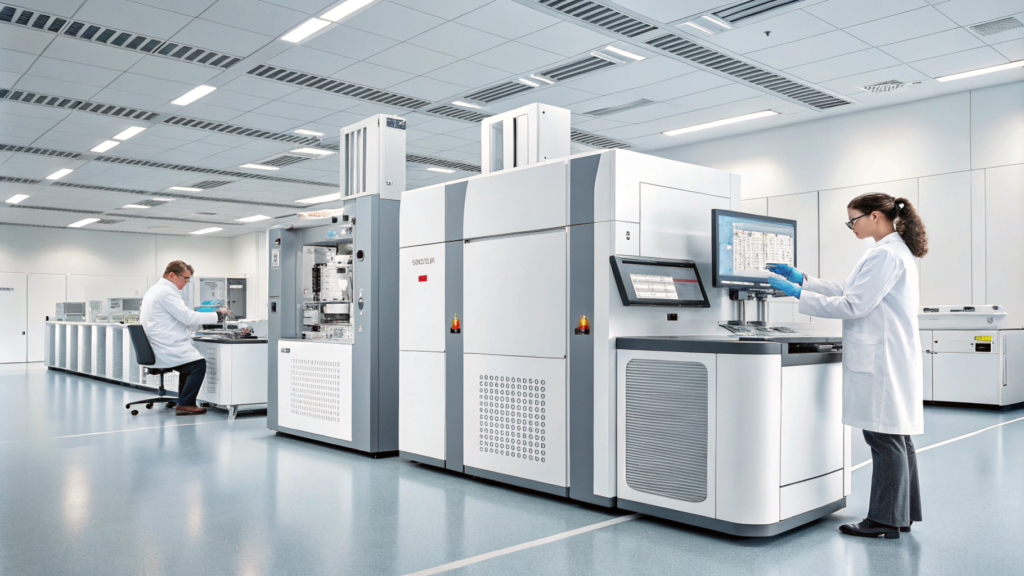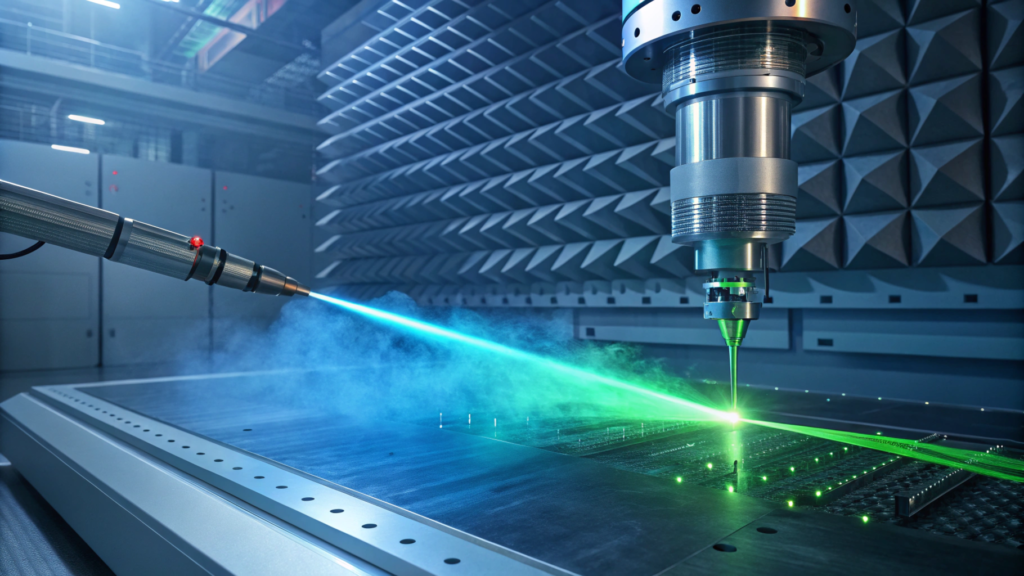
Laser chillers are revolutionizing various industries by providing precise and efficient cooling solutions. The ability to cool with lasers opens up new possibilities in fields that demand exact temperature control and minimal thermal fluctuations. So, what exactly are laser chillers used for? Let’s explore the diverse application areas of this advanced technology.
Laser chillers are utilized in sectors like manufacturing, medical research, and high-tech industries, particularly for precise cooling in sensitive environments like laser cooling1, electronics, and scientific equipment.
Transition paragraph: The unique ability of laser chillers to control temperature on a micro or nanoscales offers huge advantages in fields like physics, laser technology, and healthcare. But what makes this technology so significant? Let’s dive deeper into some of its most common uses.
[Table of contents]
What are the applications of laser cooling?
Laser cooling is a key technology in many cutting-edge scientific and industrial applications. Its primary function is to reduce the temperature of materials or particles using lasers. But where is it actually applied?
Laser cooling is used in a wide range of advanced applications, from quantum computing to medical treatments. But how exactly does this process work, and why is it so valuable?
Laser cooling is used in fields like quantum mechanics2, particle physics, and medical diagnostics. It helps in cooling atoms, ions, and even small systems to ultra-low temperatures.

Laser cooling is a process where light is used to slow down particles, which effectively reduces their temperature. This technology is particularly beneficial in fields like quantum computing2, where maintaining low temperatures is crucial for stable qubit operations. In particle physics3, it is used to cool atoms to nearly absolute zero, enabling more precise measurements. Laser cooling also finds applications in mass spectrometry and medical diagnostics, where temperature control is essential for high-precision instruments.
Where are chillers mostly used?
Chillers, in general, are widely used in various industries where temperature regulation is critical for efficiency and performance. But how do laser chillers compare to traditional ones?
Laser chillers might be a newer technology, but they are finding increasing use in industries that require highly precise temperature management. Let’s explore their main uses in real-world applications.
Laser chillers are mainly used in high-tech industries, including medical equipment cooling4, laser technology, and scientific research.
Traditional chillers are often used to maintain low temperatures in large systems, such as HVAC systems or industrial equipment. However, laser chillers excel in areas requiring highly controlled cooling with minimal thermal noise. For example, in the semiconductor industry5, laser chillers are used to keep delicate components cool during manufacturing. In medical research4, they can be used to cool diagnostic equipment or biological samples with pinpoint accuracy. The versatility of laser chillers makes them an ideal choice for cutting-edge technology, like optical lasers6 and particle accelerators.
What is a laser chiller?
Before we dive deeper into its applications, it’s important to understand what a laser chiller is. Unlike conventional cooling systems, laser chillers use lasers to manage temperature at a microscopic level.
A laser chiller might sound like a futuristic technology, but it’s already being used in various sectors. Let’s take a closer look at what exactly a laser chiller is.
A laser chiller is a cooling device that uses laser light to reduce the temperature of materials, particles, or even gases to extremely low levels.

Laser chillers work by directing laser beams at a material or particle, where the energy from the laser interacts with the particles and reduces their motion. This reduction in motion lowers the temperature of the substance being targeted. One of the most exciting aspects of laser chillers is their ability to cool things to extremely low temperatures, even near absolute zero. They are often used in applications where traditional cooling methods would be too bulky, inefficient, or imprecise. Their precision makes them invaluable in fields like laser optics6, where temperature fluctuations can impact performance.
Why is laser cooling important?
Laser cooling is not just a novelty – it plays a crucial role in scientific research and modern technology. But why is this cooling method so vital?
Laser cooling is gaining traction for a reason – it offers unparalleled precision and efficiency in cooling. But what makes it so important, and how is it changing the game for researchers and industries alike?
Laser cooling enables scientists to explore phenomena that were previously out of reach, such as the creation of ultra-cold molecules and the manipulation of quantum states.
One of the primary reasons laser cooling is so important is its ability to enable experiments that require extreme precision and low temperatures. For example, in quantum physics2, cooling atoms to near absolute zero allows researchers to explore quantum states that would otherwise be impossible to observe. Laser cooling also allows for the creation of ultra-cold molecular beams, which are crucial in fields like chemical reactions and fundamental physics. In industrial applications, laser cooling is making it possible to develop better, more efficient lasers, which can be used in everything from telecommunications to medical treatments. The importance of laser cooling lies in its ability to enable groundbreaking advancements in technology and research.
Can laser cool to absolute zero?
This is a common question that arises when discussing the capabilities of laser chillers. Absolute zero, which is the lowest possible temperature, is theoretically unreachable. But can lasers come close?
The concept of cooling something to absolute zero is fascinating but complex. Can lasers truly reach this extreme limit, or is it simply a theoretical goal?
No, lasers cannot cool to absolute zero, but they can get very close, allowing for extremely low temperatures in controlled environments.
While it is true that laser cooling cannot achieve absolute zero, it is still incredibly effective in bringing temperatures down to just a fraction above it. Absolute zero represents a state where atomic motion completely stops, and reaching this temperature is impossible according to the laws of thermodynamics. However, laser cooling allows scientists to slow down atoms to the point where their motion is minimal, approaching the theoretical limits. In practical terms, this means lasers can cool atoms to nanokelvin ranges, which are cold enough for most scientific applications, such as quantum computing and atomic clocks. While absolute zero remains out of reach, laser cooling pushes the boundaries of what is possible.
Conclusion
Laser chillers are transforming industries with their precision cooling capabilities, from high-tech manufacturing to groundbreaking research in quantum physics2. Their applications continue to expand, making them an essential tool for tomorrow’s innovations.
-
Learn more about laser cooling technology, used in applications from quantum computing to medical research. ↩
-
Quantum mechanics and quantum computing rely on precise temperature control. Laser cooling is essential for stabilizing qubits in quantum computing. ↩ ↩ ↩ ↩
-
In particle physics, laser cooling enables experiments that need ultra-precise control of atomic particles at low temperatures. ↩
-
Medical equipment often requires precise cooling, which is where laser chillers come into play for diagnostics and sample preservation. ↩ ↩
-
In semiconductor manufacturing, maintaining low temperatures during production is critical for component stability. ↩
-
Laser optics require minimal thermal fluctuations, making laser chillers ideal for these sensitive environments. ↩ ↩
